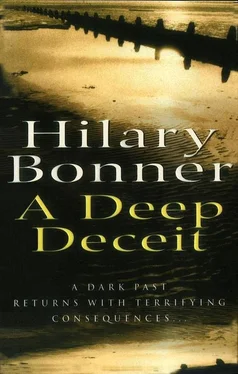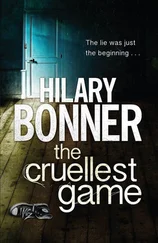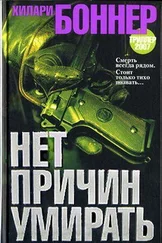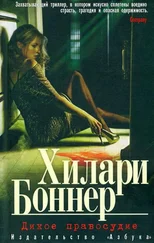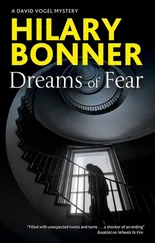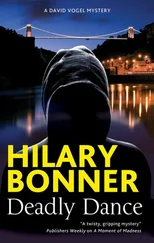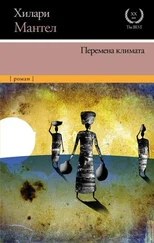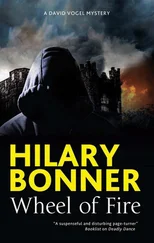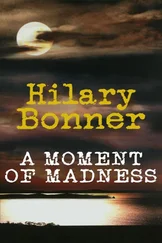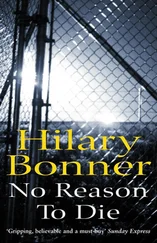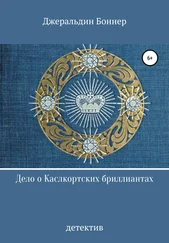I swung to look at him. He was totally po-faced.
‘You Philistine,’ I said. ‘Have you no soul? That was just amazing, wasn’t it?’
‘Was it?’ he enquired guilelessly.
I made a threatening gesture with the palm of my right hand. I knew he was joking, but even so...
Carl relented. ‘Yes, it was amazing,’ he said, his face softening. ‘Of course it was. Makes all our problems seem so unimportant, doesn’t it?’
I knew exactly what he meant. And I just hoped that our problems would indeed prove to be unimportant.
One way and another the eclipse was the high spot of an indifferent summer, which turned gradually into a mild but exceptionally wet early autumn. During the torrential rain which drenched the south west through almost all of September the roof in our lean-to kitchen sprang a leak again. Carl tried to patch it as best he could. Our absentee landlord hadn’t raised our rent for almost three years and we didn’t want to jog his memory.
Carl finished several of the abstracts I considered to be quite brilliant. He had taken to using oil pastels rather than paint. They didn’t fetch the price of oil paintings, but he could complete them much more quickly and in any case I knew that he enjoyed the medium. Also, the speed with which he could produce in pastels gave his work a spontaneity, which I thought added a distinctive sharpness.
One evening I made pumpkin soup, one of his favourite dishes. I served the soup in deep round bowls, its vivid yellowish-red colour streaked with cream and dotted with chopped chives. Carl enthused as much about the look of it as the taste and as soon as he had finished eating disappeared into his studio, for once telling me not to follow him because he wanted to surprise me. Only three or four hours later he emerged with a splendid three-foot-square painting of my pumpkin soup. On it he had written ‘For Suzanne.’ It was the most wonderful present I had ever been given. The next day he framed it for me. We hung it in the dining room and it seemed to transform the room. It remains to this day my favourite of all Carl’s paintings, not least for the spirit in which it was painted and given to me.
This was a prolific period for Carl. There was another piece, in brilliant primary colours, which I also thought particularly impressive. It consisted of a striking series of interlocking circular shapes, each one sharply defined in itself and yet also blending to be part of another. He called it Balloons .
One afternoon, exceptionally dry and bright for November, we walked together to the Logan Gallery, the little shop up the hill that sold most of Carl’s work for him, taking with us Balloons and two other recent paintings. The owner, Will Jones, was a quietly spoken former schoolteacher with a real eye, Carl always said. Will had taught art for many years and dreamed of one day becoming a full-time painter himself. That dream never came true. Will said he guessed he’d never been quite good enough, although Carl and I didn’t believe he meant it. Artists never did. I had grown to understand that most unsuccessful painters were convinced the only reason they weren’t as big as Picasso was that there had been a conspiracy against them. But if Will had that bitterness inside him, at least he didn’t show it. Indeed, he insisted that having his own gallery was a good second best for him.
He greeted us warmly as he always did, unfolding himself from his chair as we entered the shop and stretching out his arms in welcome. He was exceptionally tall, about six foot five, and spent most of his time in old St Ives ducking to avoid smashing his head – somewhat protected though it was by a thick, almost bouffant halo of silver hair – against doorways and low ceilings.
He kissed me rather theatrically on both cheeks and his arms quickly wound themselves round my waist. I well was aware that Will grasped every opportunity to touch me with considerable enthusiasm. I wished he wouldn’t, but he didn’t mean any harm. He was just a tactile sort of person. Sometimes I quite enjoyed the attention, to tell the truth, and he never really took liberties. He looked a bit like Peter O’Toole with big hair, had a penchant for velvet jackets and capes, and was certainly the most unlikely shopkeeper. I suppose he reckoned he could at least look like an artist, although I always thought he resembled an actor playing the part.
He was, however, physically overwhelming, partly because of his size and partly because of his personality. The bear-hug in which he grasped me took the breath from my body.
‘Will, be careful,’ I admonished him.
He backed off at once. ‘Sorry, darling, just so pleased to see you,’ he cried and winked at me in that way he had, which demonstrated that he wasn’t in the least bit sorry and would actually like to hug me again.
I nearly always accompanied Carl to the Logan Gallery because I enjoyed looking around and I liked chatting to Will. He was the kind of man who accepted you for what you were and didn’t ask too many personal questions. I even liked the name he had chosen for his much loved gallery – Logan, after the famous Logan Rock, a sixty-five-ton hunk of granite balanced impossibly on a clifftop at Treen right down at the bottom end of Cornwall not far from Land’s End.
‘As wondrous a piece of natural sculpture as you’ll ever be lucky enough to encounter,’ was Will’s opinion of the Logan Rock. And you had to warm to a man who could see the world like that. He was a true romantic, right enough, and I liked romantics.
Will took the three wrapped paintings from Carl, but at first merely put them to one side unopened. ‘Coffee?’ he enquired. This was part of the ritual.
While Will busied himself with the kettle in the little back room, Carl and I studied the work of the opposition, as it were. There was a small Clive Gunnell bronze called Windows – an abstract of intertwining ovals, their inner curves finished in a beautiful green patina – which I particularly admired, but Carl and I weren’t into buying other people’s art. Sadly, we could not afford to.
‘Turn it round,’ instructed Will, when he returned to the gallery and noticed me studying the Gunnell. The bronze was mounted and balanced on a plinth, which allowed it to be rotated. Slowly I turned it a full circle.
‘See, it looks right from every angle,’ said Will. ‘You should be able to do that with any piece of work that is truly sculptural. And if you can’t, then whatever it is and whoever it’s by, it’s too one-dimensional and not really a sculpture at all.’
Will had a habit of always having to know more than you did and a rather condescending way of lecturing in a schoolmasterly fashion, but he did know his business, there was no doubt about that, which was why Carl had so much respect for him.
Only when we were sipping our coffee from brightly coloured mugs did Will start to unwrap Carl’s paintings. Then he propped them one by one against a wall and stood back, hands on hips, head thrown back, legs akimbo. A flamboyant pose.
The first he looked at was Balloons , black-edged and framed in white wood – Carl did all his own framing; he said he had no intention of sharing his meagre profits with anybody else. Balloons was a large painting, slightly more than three foot square, just a little bigger than my Pumpkin Soup . Its vibrant colour and dramatic shapes seemed to dominate the gallery. I reckoned it was the finest piece of work in the room – apart from the Gunnell bronze, perhaps.
Will was silent for what seemed a lifetime. ‘You get better with every canvas, Carl,’ he said eventually.
Carl beamed. I glowed. We both respected Will’s opinion enormously – don’t take my description of him to suggest that we regarded him as a figure of fun, because we didn’t. Rather, we considered him a true eccentric, but also a true expert.
Читать дальше
